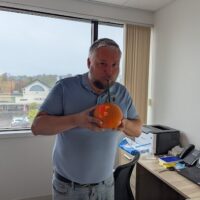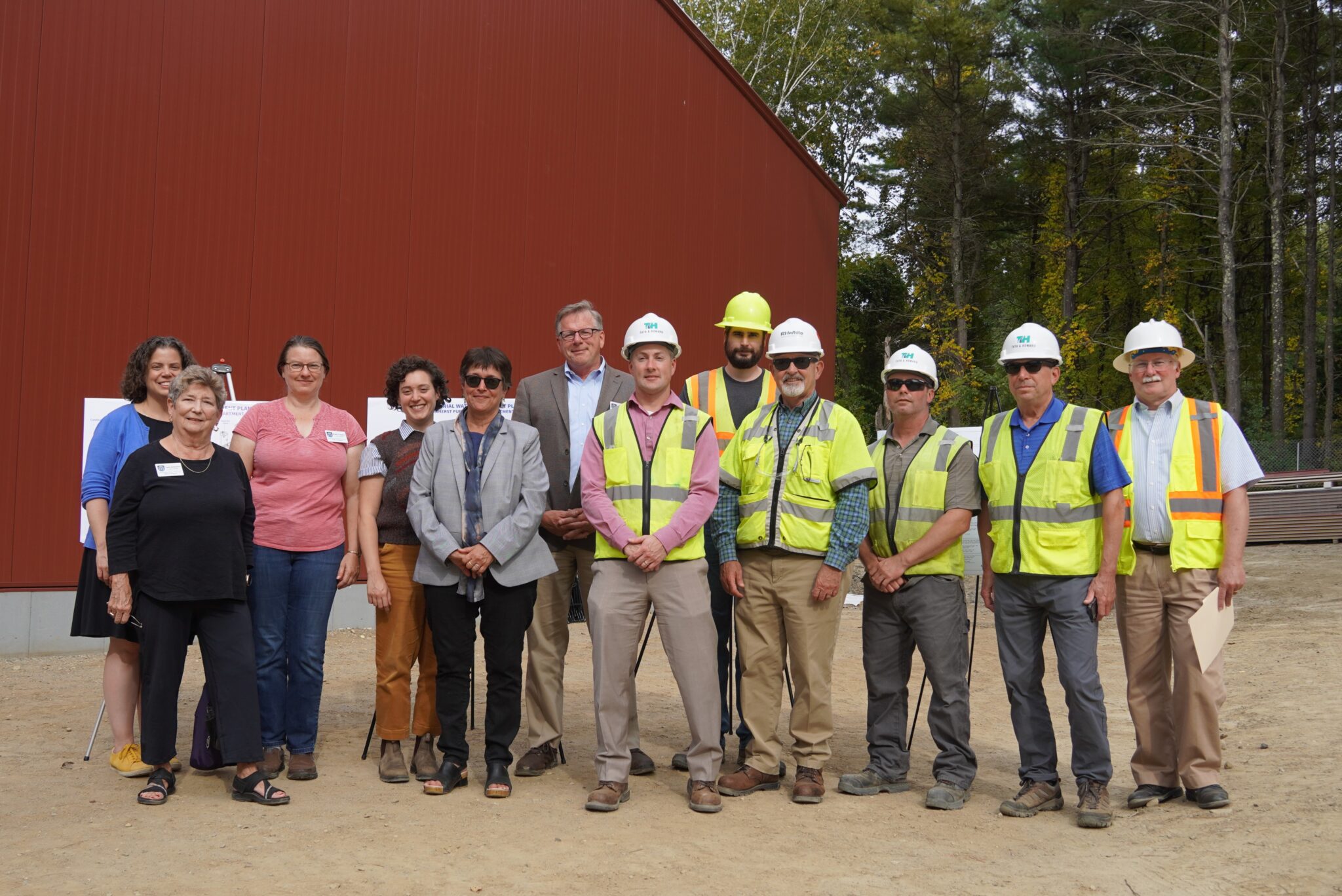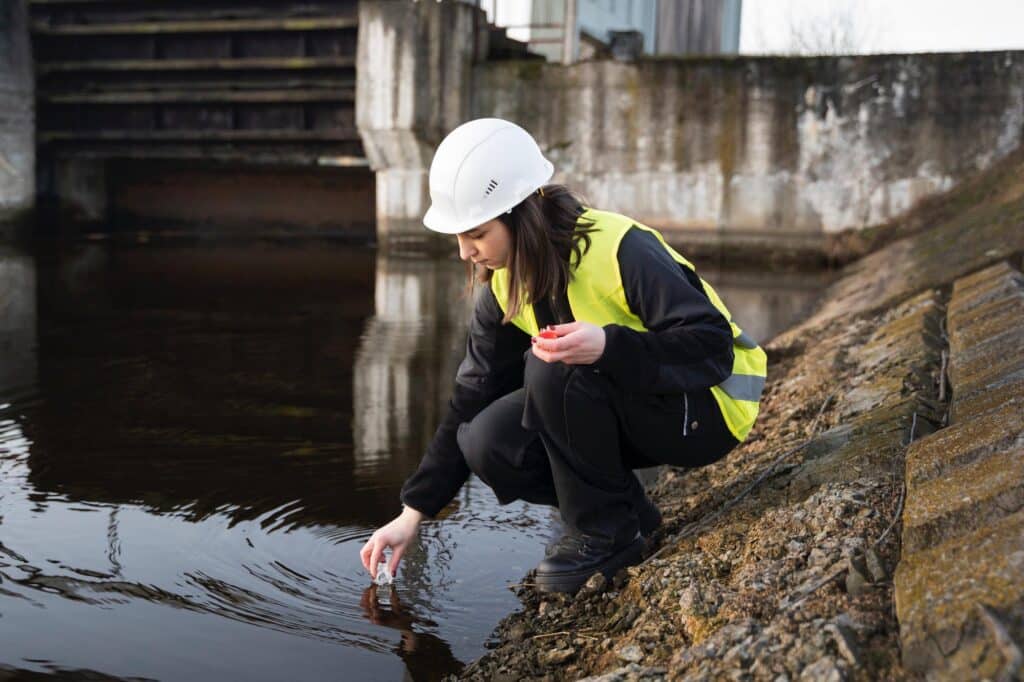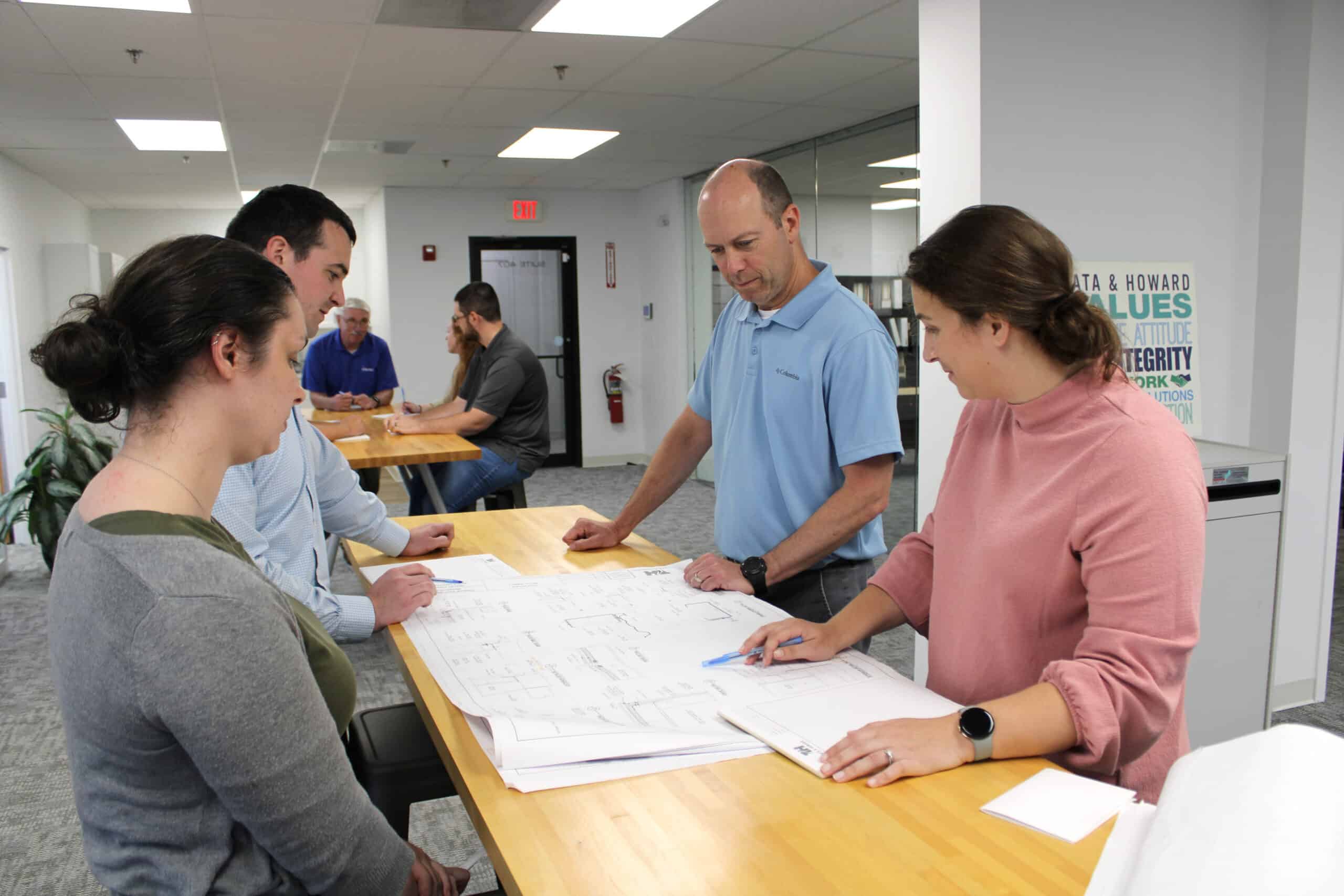Being an employee-owned company means more than shared financial ownership; it means shared purpose, shared values, and a shared commitment to giving back. Our culture of positivity is woven into everything we do and has been one of our five corporate values — along teamwork, efficient solutions, client satisfaction, and integrity — since our inception.
Throughout the year, our employee-owners come together to strengthen our communities, celebrate one another, and build a workplace where generosity, positivity, and teamwork (another of our core values!) thrive.
In the spirit of our ESOP mission, we’ve built traditions that not only bring our team closer, but make a meaningful impact toward our shared values both internally and externally. Here’s a look at the past year filled with service, connection, and ESOP pride.

February: Volunteering at Naugatuck Valley Soup Kitchen
Starting the new year in service is more than just a resolution at Tata & Howard (T&H), but rather a year-long mission. In February, the T&H team raised funds through our annual Superbowl squares, raising $500 for the Naugatuck Valley Soup Kitchen (NVSK). Judy Soda from our team also volunteered at NVSK, helping prepare and serve meals for individuals and families in need. NVSK serves the Borough of Naugatuck, Connecticut by delivering free meals to local residents and stocking two pantry boxes that are open 24/7 for community members seeking food assistance.

March: Team Celebrations and Pi Day Fun
In March, we celebrated with several events, bringing our team together for fun, appreciation, and tasty desserts. It started with members of our team hitting the slopes together for a day of outdoor fun and camaraderie at Wachusett Mountain. On March 7 (Employee Appreciation Day), we celebrated our team’s hard work and dedication with a catered luncheon. Lastly, on 3/14 (also known as Pi Day), we celebrated with a little math and a lot of pie because every great team needs a break for a sweet treat.
April: Honoring Administrative Professionals
At T&H, we believe that every team member, regardless of their role, plays an integral part in our success and should be celebrated. This month we took part in Administrative Professionals Day by celebrating two spectacular team members: Judy Soda and Jan Stone. Without them, our office wouldn’t run with the same efficiency, warmth, and care that our team and clients rely on every day.
May: Moving on Up
In May, we moved our corporate headquarters to a brand new location at 201 Boston Post Road West in Marlborough. The move provides a brand new, modernized facility for the comfort of our employee-owners and our clients, as well as room to accommodate our growth.

June: Fun in the Sun
Members of our team enjoyed some fun in the sun at Gillette Stadium for the New England Revolution vs. Nashville SC game as part of the NE Water Works Association (NEWWA) Member Appreciation Event. Thank you to NEWWA!
October: ESOP Month
October was ESOP Month, and at T&H, we take celebrating ownership seriously. It’s our most activity-packed month, filled with fun, philanthropy, and team bonding. Highlights included a clothing drive for Tailored for Success, Inc., a local not for profit organization that provides job resources and assistance to economically disadvantaged women, men and youth; a fun and competitive APEX team outing; Anything But a Cup challenge; wine and cheese night; game competitions, and more!
ESOP Month brings out the best of our culture — engagement, excitement, and ultimate positivity.
 November: Annual Food Drive
November: Annual Food Drive
In November, we hosted our annual food drive for the Worcester County Food Bank (WCFB). The WCFB is one of only three Feeding America member food banks in the entire state of Massachusetts, providing food to tens of thousands of people every year. This year, we were able to donate 2,116 items to help ensure families in our communities were able to enjoy a warm and plentiful holiday season.
December: Giving Tree
In December, we annually support Hopewell Family Services, the largest nonprofit provider of comprehensive foster care in Massachusetts. Employee-owners choose tags from our Giving Tree and purchase gifts to fulfill foster children’s specific holiday wishes. In addition to providing gifts to children during the holidays, Hopewell programs provide a range of critical social services to children, adults, and families across the state throughout the year.
The Year in Review: What It All Means
Reflecting on this past year reminds us that being an employee-owned company isn’t just a business model, but rather is a way of showing up for each other and for the communities we serve. Every volunteer effort, celebration, and shared experience strengthened the positive connections that make T&H such a special place to work — and work with.
We’d love to share more about what it’s like to work for or collaborate with Tata & Howard. If you’re curious or considering joining our team or partnering with us, please reach out anytime.






























 Imagine a day where our access to that water wasn’t available. Now, imagine a day without the people who work tirelessly to make that water safe and accessible.
Imagine a day where our access to that water wasn’t available. Now, imagine a day without the people who work tirelessly to make that water safe and accessible.






 Next is communication planning.
Next is communication planning.  Design
Design Construction Administration
Construction Administration Delivering Synergy from Start to Finish
Delivering Synergy from Start to Finish Planning for Performance: Strategic Capital Planning
Planning for Performance: Strategic Capital Planning
 One Strategy, Three Dimensions
One Strategy, Three Dimensions The Donald J. Tata Engineering Scholarship is an annual scholarship given in honor of Tata & Howard co-founder Don Tata to a deserving senior from Marlborough High School who will be pursuing an engineering degree in college.
The Donald J. Tata Engineering Scholarship is an annual scholarship given in honor of Tata & Howard co-founder Don Tata to a deserving senior from Marlborough High School who will be pursuing an engineering degree in college. Comprehensive Services Backed by Regulatory Expertise
Comprehensive Services Backed by Regulatory Expertise Best Practices in New Water Source Development
Best Practices in New Water Source Development Case Study: Replacement Wells in Shrewsbury, Massachusetts
Case Study: Replacement Wells in Shrewsbury, Massachusetts